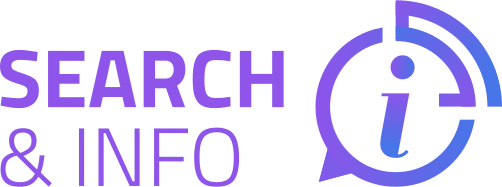Table of Contents
Tax season can be a stressful time for individuals and businesses alike, with complex regulations and ever-changing laws complicating the filing process. Whether you&8217;re seeking assistance with tax preparation, planning, or resolution of tax issues, understanding the various forms of tax assistance available can help ease the burden and ensure compliance with tax laws. In this comprehensive guide, we will explore the world of tax assistance, covering everything from professional services and software tools to government programs and resources.
I. Introduction to Tax Assistance
A. Overview
Tax assistance encompasses a range of services and resources designed to help individuals and businesses navigate the complexities of tax laws, maximize tax benefits, and ensure compliance with regulatory requirements.
B. Importance
Access to reliable tax assistance is essential for taxpayers to fulfill their tax obligations accurately, minimize tax liabilities, and avoid penalties or legal consequences associated with non-compliance.
II. Types of Tax Assistance
A. Professional Services
- Tax Preparation Services: Certified public accountants (CPAs), enrolled agents (EAs), and tax preparers offer assistance with preparing and filing tax returns, ensuring accuracy and compliance with tax laws.
- Tax Planning Services: Tax professionals provide strategic guidance and advice on minimizing tax liabilities through strategic planning, deductions, credits, and other tax-saving strategies.
B. Software Tools
- Tax Preparation Software: Commercial software programs such as TurboTax, H&R Block, and TaxAct offer user-friendly platforms for individuals and businesses to prepare and file their tax returns electronically.
- Tax Planning Software: Financial planning software tools, such as Intuit ProConnect and Drake Tax Planner, provide tools and calculators for analyzing tax implications and optimizing financial decisions.
C. Government Programs
- Volunteer Income Tax Assistance (VITA): IRS-sponsored program offering free tax preparation services to low-income individuals, elderly taxpayers, and individuals with disabilities.
- Tax Counseling for the Elderly (TCE): IRS program providing free tax assistance and counseling to elderly taxpayers aged 60 and older, with a focus on retirement-related tax issues.
III. Table: Comparison of Tax Assistance Services
| Tax Assistance Service | Description | Target Audience | Cost | Availability |
|---|---|---|---|---|
| Professional Services | Provided by CPAs, EAs, and tax preparers | Individuals, Businesses | Varies by Firm | Year-round |
| Tax Preparation Software | Commercial software for electronic filing | Individuals, Businesses | Varies by Plan | Year-round |
| Government Programs | IRS-sponsored programs for free tax assistance | Low-income, Elderly | Free | Tax Season (Jan-Apr) |
IV. Benefits of Tax Assistance
A. Accuracy
Professional tax assistance ensures accurate preparation and filing of tax returns, reducing the risk of errors, omissions, or discrepancies that could trigger audits or penalties.
B. Compliance
Tax professionals help taxpayers understand and comply with complex tax laws, regulations, and reporting requirements, minimizing the risk of non-compliance and associated penalties.
C. Maximizing Tax Benefits
By leveraging their expertise and knowledge of tax laws, professionals help taxpayers identify and maximize available deductions, credits, and other tax-saving opportunities.
V. Considerations When Choosing Tax Assistance
A. Qualifications and Credentials
Verify the qualifications, credentials, and experience of tax professionals or software providers to ensure they are reputable and capable of providing reliable tax assistance.
B. Cost and Fees
Compare the cost of professional services and software tools, considering factors such as pricing plans, fees, and additional charges for ancillary services.
C. Accessibility and Support
Evaluate the accessibility and availability of tax assistance services, including customer support, assistance with tax-related questions, and response times.
VI. Future Trends in Tax Assistance
A. Technology Integration
Advancements in technology, such as artificial intelligence (AI) and machine learning, are shaping the future of tax assistance, offering innovative solutions for tax preparation, planning, and compliance.
B. Remote Services
The rise of remote work and virtual collaboration is driving the adoption of remote tax assistance services, allowing taxpayers to access professional assistance and support from anywhere, anytime.
C. Regulatory Changes
Changes in tax laws and regulations, including updates to tax codes and reporting requirements, will continue to influence the landscape of tax assistance, requiring tax professionals and software providers to adapt and evolve their services accordingly.
VII. Conclusion
Tax assistance plays a crucial role in helping individuals and businesses navigate the complexities of tax laws, maximize tax benefits, and ensure compliance with regulatory requirements. By understanding the various types of tax assistance available, evaluating their benefits and considerations, and staying informed about future trends, taxpayers can make informed decisions and effectively manage their tax obligations.
In conclusion, tax assistance is not just about filing tax returns—it&8217;s about empowering taxpayers with the knowledge, support, and resources they need to navigate the tax landscape confidently and successfully.
Sources:
- Internal Revenue Service (IRS). (2022). Volunteer Income Tax Assistance (VITA) and Tax Counseling for the Elderly (TCE). https://www.irs.gov/
- TurboTax. (2022). Tax Preparation Software. https://turbotax.intuit.com/
- National Association of Tax Professionals (NATP). (2022). Tax Professional Directory. https://www.natptax.com/

